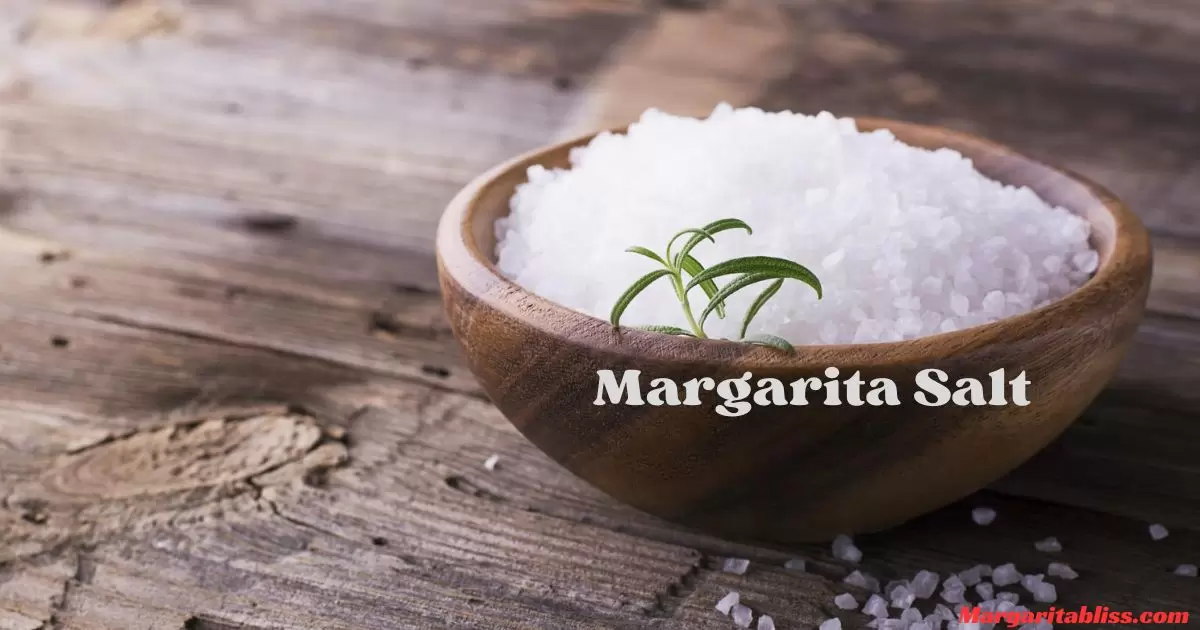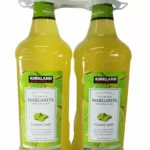Margarita salt, a key ingredient in crafting the perfect margarita, is often seen rimming the glass of this classic cocktail. Understanding whether this specialized salt can go bad is essential for bartenders and cocktail enthusiasts alike. This article delves into the nature of margarita salt, exploring its shelf life, factors that affect its longevity, and best practices for storage.
Margarita salt differs from regular table salt in its coarser texture and sometimes in flavor infusions. Its role in enhancing the drinking experience makes it an important item in any cocktail enthusiast’s pantry. On National Daiquiri Day, this brings up the question of its durability and how long it can retain its optimal quality.
Composition of Margarita Salt
Margarita salt typically consists of larger, coarser grains compared to regular table salt. This texture is essential for creating the iconic margarita glass rim. Some varieties are infused with flavors like lime or jalapeño to add an extra zest to the cocktail experience.
In contrast to table salt, which often contains additives like iodine and anti-caking agents, margarita salt is usually more natural. This difference in composition can influence how margarita salt reacts to environmental factors and how it should be stored.
Factors Affecting Shelf Life
| Factor | Effect on Margarita Salt | Prevention Tips |
| Moisture | Can cause clumping and degrade quality | Store in a dry, cool place |
| Air Exposure | Increases the risk of contaminants | Use airtight containers |
| Storage Conditions | Poor conditions can reduce shelf life | Avoid direct sunlight and heat |
Margarita salt’s shelf life can be significantly affected by external factors such as moisture and air exposure. Moisture can cause the salt to clump together, making it difficult to use, while exposure to air can introduce contaminants that may affect its quality.
Proper storage is key to maintaining the quality of margarita salt. Keeping it in a dry, cool place away from direct sunlight can prevent moisture absorption and reduce the risk of contamination. Airtight containers are ideal for preserving its freshness.
Shelf Life of Margarita Salt
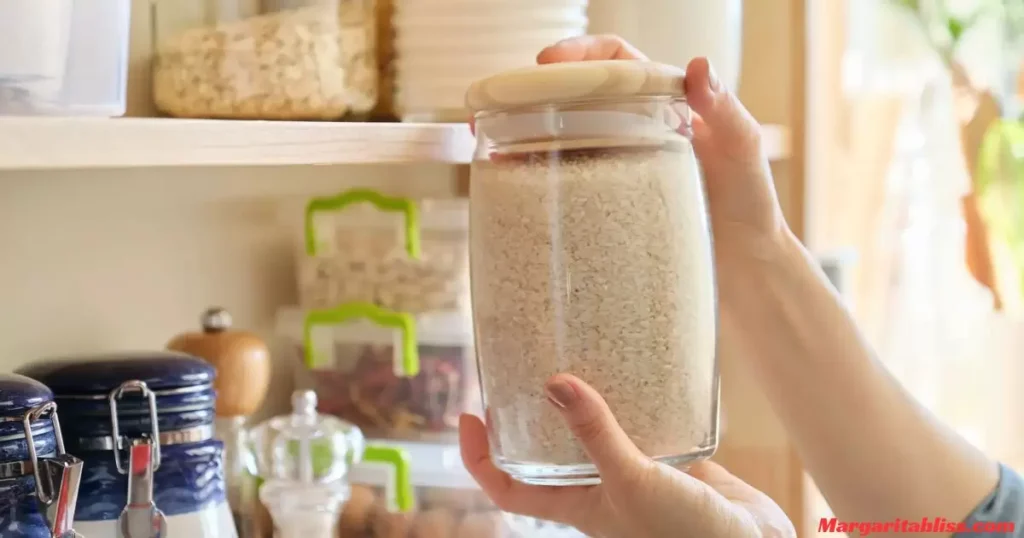
Under ideal storage conditions, margarita salt can last indefinitely. Salt, by its nature, is a mineral that does not spoil. However, it can lose its quality, especially if infused with additional flavors or exposed to compromising conditions.
The signs of degradation in margarita salt are usually evident. If you notice a change in texture, clumping, or an off smell, especially in flavored varieties, it’s a sign that the salt may not be at its best. While it is not harmful to consume, it could affect the taste of your cocktails.
Best Storage Practices
To ensure that your margarita salt stays fresh and ready for use, store it in a cool, dry place. Humidity is the enemy of salt, as it can lead to clumping and a breakdown in quality. A pantry or cupboard away from the stove or dishwasher is ideal.
Consider storing your margarita salt in an airtight container to protect it from moisture and air. Glass or plastic containers with tight-fitting lids are excellent choices. If the salt came in a cardboard or paper packaging, transferring it to a more durable container can extend its shelf life.
Health and Safety Considerations
While expired margarita salt isn’t typically dangerous, it’s essential to consider health and safety. Contaminated salt, whether by moisture or other factors, can harbor bacteria, though this is rare. Always inspect your salt before use, especially if it’s been stored for a long period.
For safe consumption, follow general food safety guidelines. If the salt looks damp, discolored, or has an off smell, it’s best to discard it. These changes can indicate contamination or degradation, which may affect not just the flavor but potentially your health.
How To Store Margarita Salt
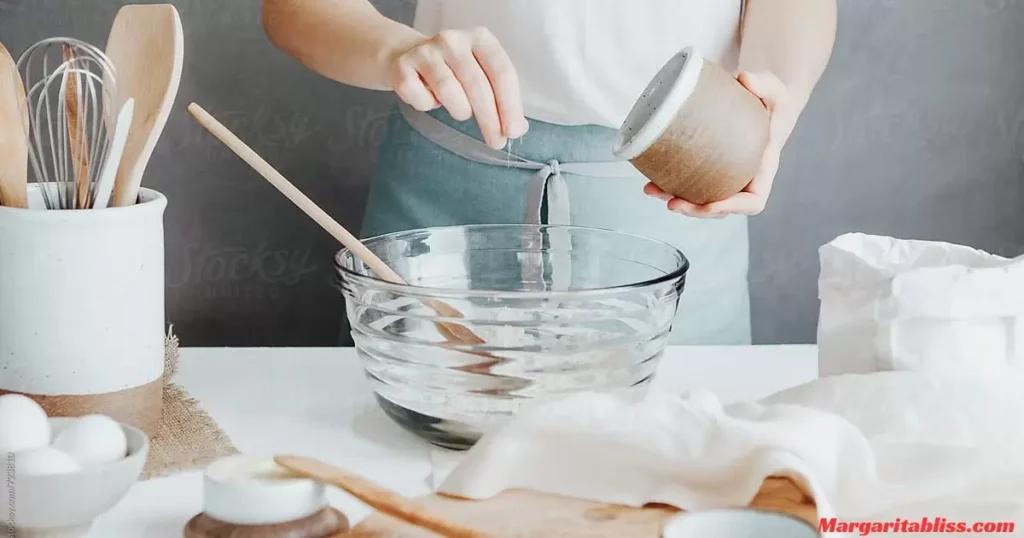
- Choose the Right Container: Use an airtight container, such as a glass or plastic jar with a tight-fitting lid, to protect the salt from moisture and air.
- Keep in a Cool, Dry Place: Store the container in a pantry or cupboard away from heat sources like stoves or dishwashers, and avoid direct sunlight.
- Avoid Moisture: Ensure the storage area is dry, as humidity can cause the salt to clump, especially flavored varieties.
- Separate Flavored Salts: If you have flavored margarita salts, store them separately to prevent flavors from mixing and to maintain their distinct aromas.
- Label and Date: Label the containers with the type of salt and the date of storage, particularly useful for keeping track of flavored salts.
- Regular Checks: Periodically check for any signs of moisture or clumping, and ensure the lid is always securely closed after use.
Does Margarita Salt Expire?
Margarita salt, like other salts, does not expire in the traditional sense since it’s a mineral that doesn’t spoil. However, its quality can degrade over time, especially if it’s flavored or exposed to environmental factors like moisture and air.
While it remains safe to consume indefinitely, factors like clumping, moisture absorption, or loss of flavor can occur. This degradation is more pronounced in flavored salts, where the added ingredients may lose their potency or aroma. Proper storage is key to maintaining its quality for an extended period.
How To Tell If Margarita Salt Is Expired
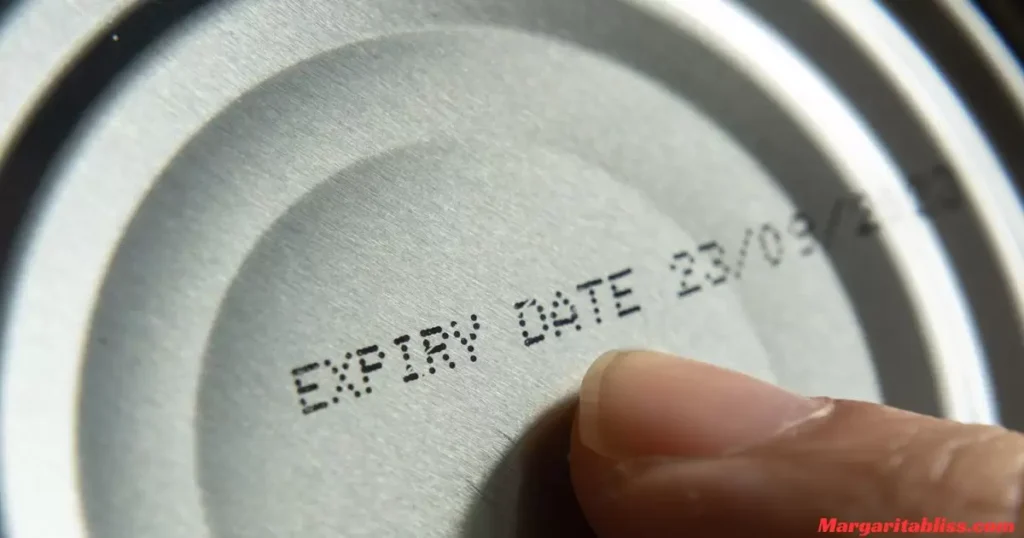
To determine if margarita salt has degraded in quality, consider the following indicators
Clumping: Margarita salt that has absorbed moisture may form clumps, indicating exposure to humidity or water. While clumping doesn’t make it unsafe for consumption, it can affect its usability and texture.
Change in Texture: Apart from clumping, any other noticeable change in texture, such as hardening or becoming powdery, can signal that the salt has been affected by environmental factors.
Off Smell: If your margarita salt, especially flavored varieties, starts to emit an unusual or off smell, it may indicate that it has been exposed to contaminants or that the flavor additives have started to degrade.
Color Change: Any significant change in color, particularly in flavored salts suggest contamination or a decline in the quality of the added ingredients.
Ways To Use Up Margarita Salt Before It Expires
1. Rim Cocktails: The most traditional use of margarita salt is to rim the glasses of margaritas and other cocktails. Wet the rim of the glass with a lime wedge and dip it into the salt for a classic presentation. This method isn’t limited to margaritas; try it with other cocktails for a creative twist.
2. Seasoning for Foods: Margarita salt can be a great seasoning for various dishes. Sprinkle it over grilled meats, roasted vegetables, or even popcorn for added flavor. Its coarse texture can add a pleasant crunch and enhance the overall taste of your meals.
3. Baking Ingredient: Incorporate margarita salt into your baking. It can be used in salted caramel recipes, chocolate desserts, or as a finishing touch on top of cookies or brownies. The unique flavors of margarita salt, especially if it’s lime-infused, can add an interesting twist to sweet treats.
4. Homemade Scrubs: For a non-edible use, mix margarita salt with essential oils and a carrier oil like coconut or olive oil to create a homemade body scrub. The coarse texture of the salt makes for an excellent exfoliant, leaving your skin smooth and
How Long Is Margarita Salt Good For?
Margarita salt, when stored properly, can remain good for an indefinite period. Being a mineral, salt doesn’t spoil or expire in the traditional sense. However, its quality, particularly in terms of flavor and texture, can degrade over time.
This is especially true for flavored margarita salts, where the added flavors may diminish or alter after prolonged storage. To maintain its optimal quality, it’s important to store margarita salt in a dry, cool place, away from moisture and in an airtight container, to prevent clumping and preserve its intended taste and texture.
Does Margarita Salt Go Bad In Fridge
Margarita salt does not typically go bad in the fridge, but storing it there is generally not recommended. The refrigerator can have a humid environment, which leads to clumping and moisture absorption in the salt.
Margarita salt is best stored in a cool, dry place like a pantry or cupboard. This helps maintain its texture and prevents the salt from absorbing moisture. The key to preserving margarita salt, especially flavored varieties, is to keep it in an airtight container away from moisture, heat, and direct sunlight.
Margarita Salt Vs Regular Salt
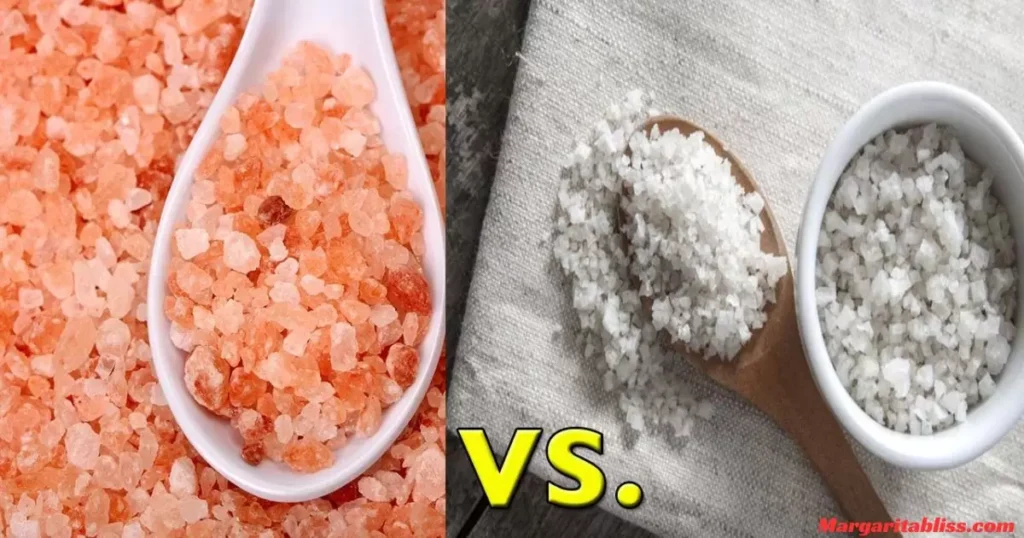
Differences in Texture and Use: Margarita salt is known for its coarse, often larger grains, making it ideal for rimming cocktail glasses, particularly margaritas. This coarser texture not only provides a visual appeal but also offers a burst of saltiness with each sip of the drink. Regular table salt, on the other hand, has fine, consistently sized grains, suited for general cooking and seasoning purposes.
Composition and Flavor: While regular table salt often contains additives like iodine and anti-caking agents to ensure a consistent flow, margarita salt is typically purer, without these additives. This pure composition can be significant for those sensitive to added iodine or seeking a more natural product.
| Feature | Margarita Salt | Regular Table Salt |
| Grain Size | Coarse, larger grains | Fine, consistently sized grains |
| Primary Use | Rimming cocktail glasses | General cooking and seasoning |
| Additives | Typically none, can be flavored (like lime) | Often contains iodine and anti-caking agents |
| Solubility | Slower, providing texture and burst of flavor | Dissolves quickly and evenly |
| Packaging | Often comes in specialty containers | Commonly available in shakers or boxes |
| Flavor Profile | Can be flavored, enhancing drinks | Neutral, meant to blend into dishes |
Conclusion
While margarita salt does not spoil or expire in the traditional sense, its quality can be affected over time. The key to preserving its texture and flavor lies in proper storage. Keeping margarita salt in a cool, dry place, away from moisture and heat, and in an airtight container, is essential. This is particularly crucial for flavored salts, where the added ingredients are more susceptible to degradation.
Regular checks for signs of moisture, clumping, or changes in smell and taste can help in maintaining its quality. While storing margarita salt in the refrigerator is not harmful, it’s not recommended due to potential moisture issues. Instead, a pantry or cupboard serves as an ideal storage location.
Understanding these storage principles ensures that your margarita salt remains an integral and enjoyable part of your cocktail-making experience. Whether used in traditional margaritas, as a seasoning in cooking, or even in creative culinary endeavors, well-preserved margarita salt can enhance flavors and add a unique touch to both food and drinks.
FAQs
Can I still use clumpy margarita salt?
Yes, clumpy salt can still be used. You can break up the clumps manually or by using a grinder.
Can I use margarita salt in cooking?
Absolutely. It can be used as a finishing salt in various dishes for added texture and flavor.
Can I use margarita salt in baking?
Yes, it can be used in baking, especially for recipes that call for a coarse salt texture.
Is margarita salt iodized?
Typically, it is not iodized, which differentiates it from regular table salt.
Can I flavor my own margarita salt?
Yes, you can add your own flavors to plain margarita salt, such as lime zest, chili powder, or herbs.
